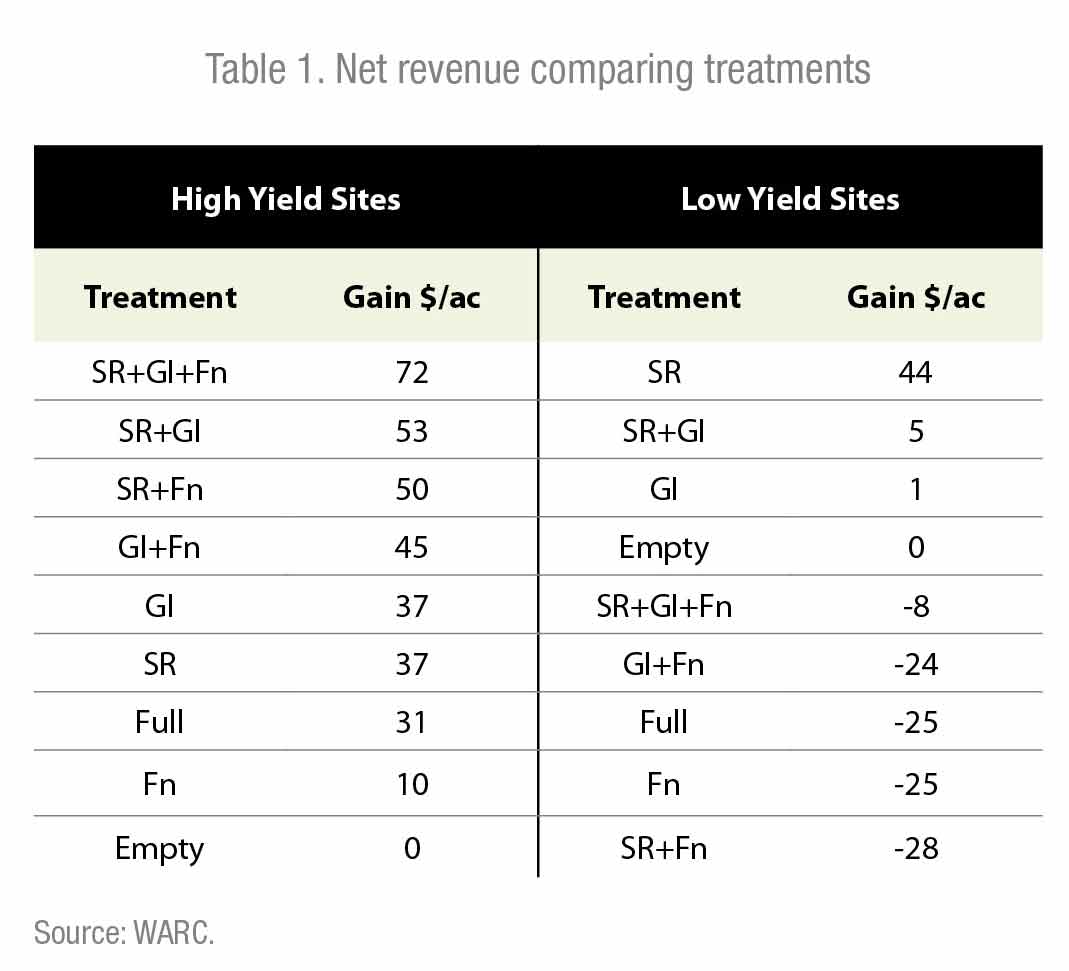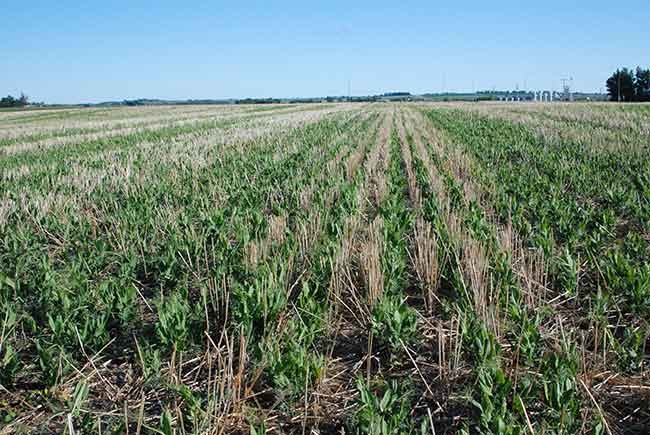
Features
Agronomy
Corn
High seeding rate = high pea yield
Farmers often wonder how to get the best bang for their buck with pea inputs. Seed, seed treatments, inoculants and foliar fungicide packages can quickly add up so they have to pay off.
Inspired by a canola input study conducted by research scientist Stu Brandt, formerly of Agriculture and Agri-Food Canada at Scott, Sask., the Western Applied Research Corporation (WARC) spearheaded a study at five sites in Saskatchewan and Manitoba to look at the optimum agronomic package for pea production.
“Many growers are managing pea inputs for high yield, but there wasn’t much research into which ones contributed the most or if the inputs had an additive effect on yield,” says Jessica Weber, WARC general manager.
The Saskatchewan Pulse Growers, and Manitoba Pulse and Soybean Growers provided funding for the trial. The objective of the experiment was to determine which individual agronomic inputs contribute most to field pea seed yield, which combination produces the highest seed yield and economic return, and how plant population, leaf and stem disease, crop maturity, grain yield and quality are affected by input interactions. Field trials were conducted in 2012-2014 at the Agri-ARM sites located at Scott, Swift Current, Melfort and Indian Head, Sask., with a fifth site at Minto, Man. added in 2014. Due to excess moisture in 2013, the trial at Melfort was terminated; data was collected from 12 site years.
The five inputs studied were:
- Seeding rate – 60 seeds/m2 vs. 120 seeds/m2 (roughly 1.8 bu/ac vs. 3.8 bu/ac)
- Seed treatment – no seed treatment vs. Apron Maxx
- Inoculant – liquid vs. granular (at recommended rates of each)
- Starter fertilizer – none vs. 34 lbs actual nitrogen (N) sidebanded
- Foliar fungicide – none vs. a two pass system (Headline EC and Priaxor DS)
The low input package was called the “empty” package and the high input package included all inputs at the highest level. Each input was tested individually and then in additive combinations of two, three, four and all five as the “full” package.
Weber says the researchers found a split in yield at the different sites around 45 bu/ac. Melfort, Scott and Minto sites had higher yields, while Swift Current and Indian Head had lower yields. The data was analyzed on the basis of high or low yield potential.
Higher seeding rates a benefit on low yield sites
At the low yielding sites – the cause wasn’t identified if it was because of root rots, moisture stress or other factors – there was a consistent advantage to seeding at the higher rate. Inoculant type did not provide a difference in yield or economic return. Foliar fungicide application in lower yielding sites depends on growing season conditions if they favoured disease development. The higher seeding rate at the low yield sites still provided a $44 per acre economic return.
“Using a seeding rate that helps establish a good plant stand was very important on the low yielding sites,” Weber says.

Additive effect with inputs at high yield sites
At the high yield sites, the higher seeding rate plus granular inoculant plus double foliar fungicide application consistently produced higher yield and better economic returns. The biggest yield responses came from higher seeding rates and foliar fungicide application. Weber says the results were additive, meaning that yield increased when each additional input was included in the treatment.
Looking at the economic analysis in further detail, WARC ran net revenue comparing the treatments at the high and low yielding sites.
“These three inputs of high seeding rate, granular inoculant and foliar fungicide application provided an economic gain of $72 per acre over the empty package at the high yielding sites,” Weber says. (See Table 1.)
Given that higher seeding rates provided the basis for higher yield and increased net returns at both high and low yielding sites, Weber says establishing a good plant stand should be at the foundation of any pea crop. In this research, plant density was increased from an average of 56 plants per square metre at the low seeding rate to 102 plants per square metre with high seeding rates at the high yielding sites. At the low yielding sites, plant populations increased from an average of 52 plants per square metre at the low seeding rate to 89 plants per square metre with high seeding rates.
On the low end, this range of densities is outside the traditionally recommended plant density. Current recommendations for pea growers are a target of 75 to 80 plants per square metre.
Interestingly, seed treatment for seedling diseases, which usually result in a better plant stand, did not produce a consistent yield improvement. This finding was unexplained and warrants further investigation.
“The results show that you should ensure your seeding rate is high enough to establish a good plant population,” Weber says.
WARC’s final summary report “recommends all farmers use seeding rates to target the recommended plant population to maximize yield potential. Under situations where the farmer targets relatively high yields, we recommend also using a granular inoculant to ensure nodulation and nitrogen fixation to provide sufficient levels of nitrogen to the crop. If the crop develops a thick canopy and/or disease develops, adding a foliar fungicide will protect and maintain the yield potential of the crop.”
The full report is available at www.westernappliedresearch.com
February 17, 2016 By Bruce Barker
 High seeding rates are the foundation of a profitable pea crop. Farmers often wonder how to get the best bang for their buck with pea inputs.
High seeding rates are the foundation of a profitable pea crop. Farmers often wonder how to get the best bang for their buck with pea inputs.